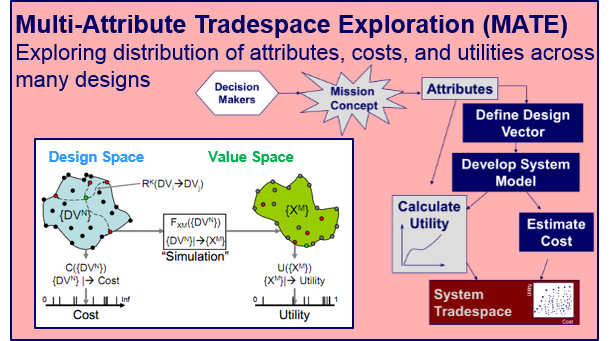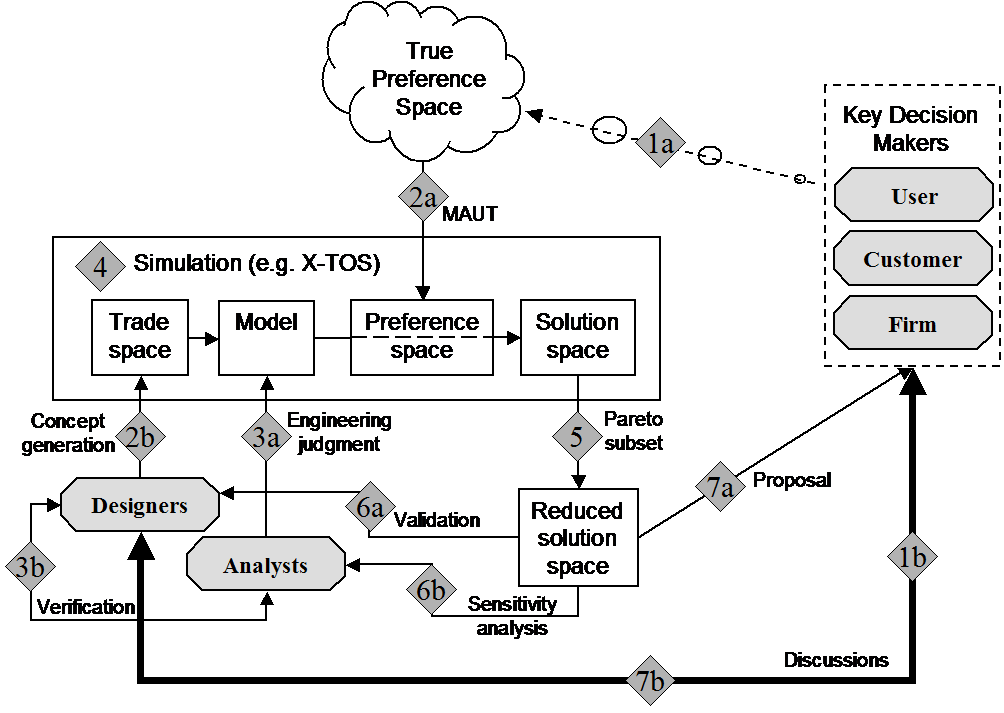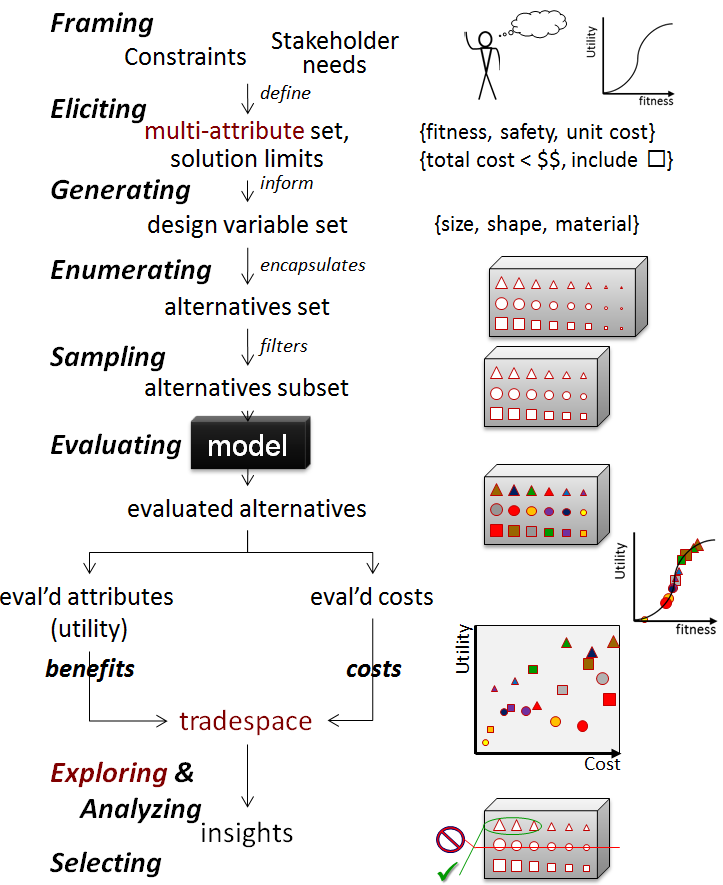
Our Location at MIT
E17-361, 40 Ames St
Kendall Square
Cambridge, MA
seari@mit.edu
617-324-0473




Multi-Attribute Tradespace Exploration (MATE) applies decision theory to model and simulation-based design. Its purpose is to help users generate insights into "what constitutes a good design solution" through enumeration (e.g. thousands or more) and evaluation (e.g. through performance, cost, and value models) of many possible solutions. Decoupling the design from the need through tradespace exploration, MATE is both a solution generating as well as a decision-making framework. The tradespace exploration paradigm discourages premature optimization and instead promotes investigation of underlying constraints, relationships between what is desired and what is technically feasible, and the degree of alignment of various stakeholder desires and the associated technical and cost implications.

Many "value-centric design methods" exist for evaluating, and sometimes motivating the generation of, design alternatives. These methods often combine techniques from multiple disciplines, such as robust design for generating and framing alternatives, multi-disciplinary optimization for evaluating alternatives, and decision theory for ranking alternatives. Evaluation and ranking techniques such as Analytic Hierarchy Process (AHP), Multi-Attribute Utility Analysis (MAUA), and Technique for Order Preference by Similarity to Ideal Solution (TOPSIS) each vary in their approach, and are incorporated to varying degrees in published conceptual design and evaluation methods. MATE couples both the solution generating and evaluating and ranking techniques, distinguishing it from traditional decision analyses techniques that often focus on the evaluation and ranking step. MATE often uses MAUA as its value modeling technique, although any value model technique can be used. The MATE value models are used explicitly to drive generation and evaluation of alternatives. Techniques such as cost-benefit analysis, or real options analysis, fall short in generating alternatives for evaluation.

At a high level, MATE consists of three general phases: mission definition, concept generation, and design evaluation. In the first phase, the mission needs and preferences of a decision-maker are defined and specified with attributes (i.e., decision-maker-perceived metrics that measure how well decision-maker-defined objectives are met). Attributes and their associated utility curves and multiplicative weighting factors are elicited through formal utility interviews with decision-makers. Single-attribute utility curves are typically aggregated using a multiplicative utility function (i.e., a dimensionless metric of user satisfaction ranging from 0, minimally acceptable, to 1, highest of expectations).
In the second phase, the attributes are inspected and various design variables are proposed that drive performance in the attributes. (Design variables are designer-controlled quantitative parameters that reflect aspects of a concept, which, taken together as a set, uniquely define a system architecture.) The actual performance will be evaluated in phase three using (often physics-based) evaluation models. Different possible combinations of design variable enumeration choices constitutes a unique design vector, and the set of all possible design vectors constitutes the design-space. This solution-generating phase-using the decision-maker-derived attributes to propose design variables to include in the trade study-explicitly links the value and technical domains of a system.
In the third phase, models (often physics-based) are developed to evaluate the lifecycle cost and utility of the designs under consideration. To assess the sampling (often full-factorial) of the design space, parametric computer models can be used to transform each design vector into attribute values against which utility functions can be applied. Following a MATE analysis, a limited number of Pareto-efficient designs may then be matured in a concurrent engineering environment. The broad, front-end evaluation of thousands of design alternatives on a common, quantitative basis provides decision-makers a prescriptive framework for selecting designs to carry forward for more detailed analysis.
